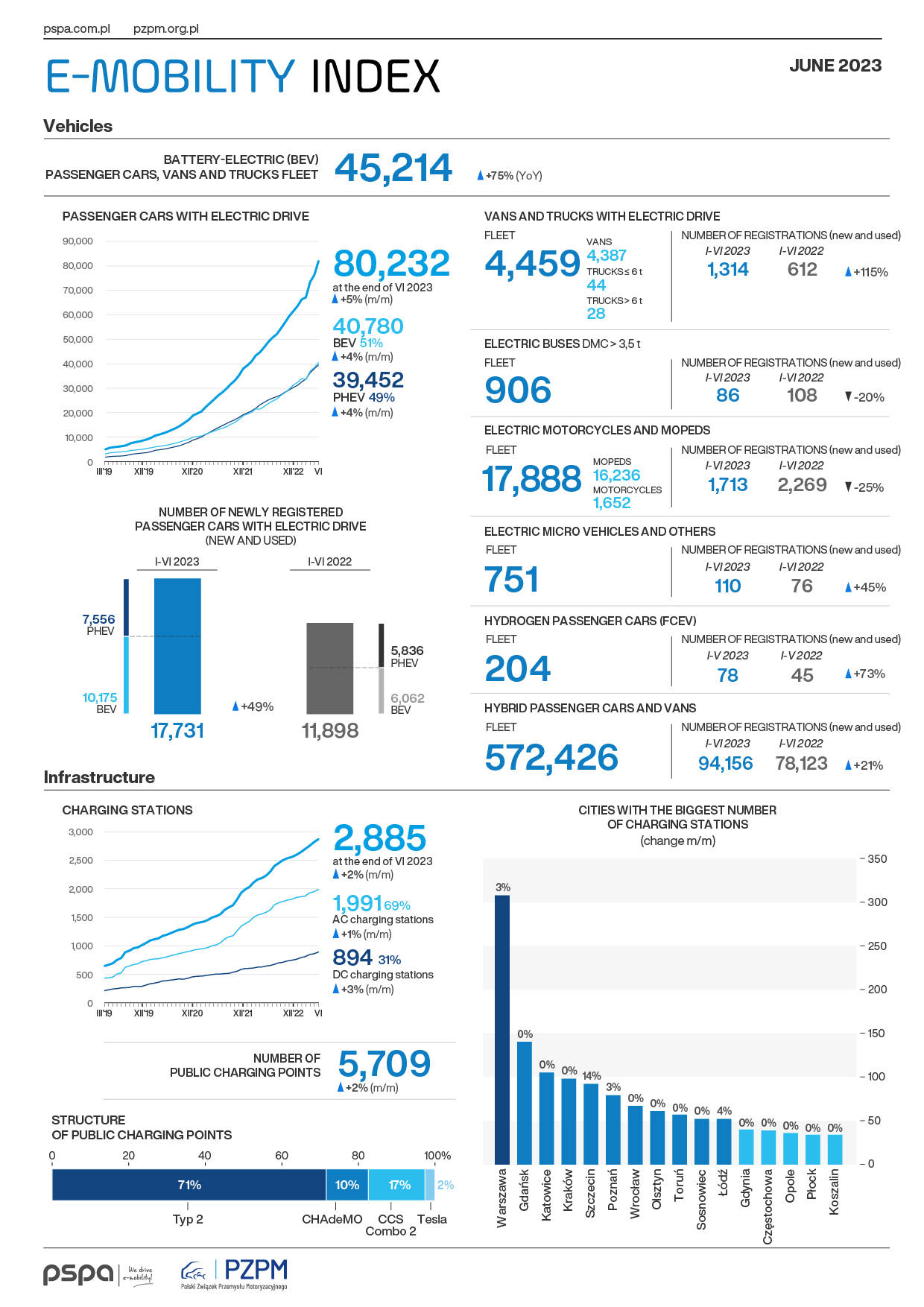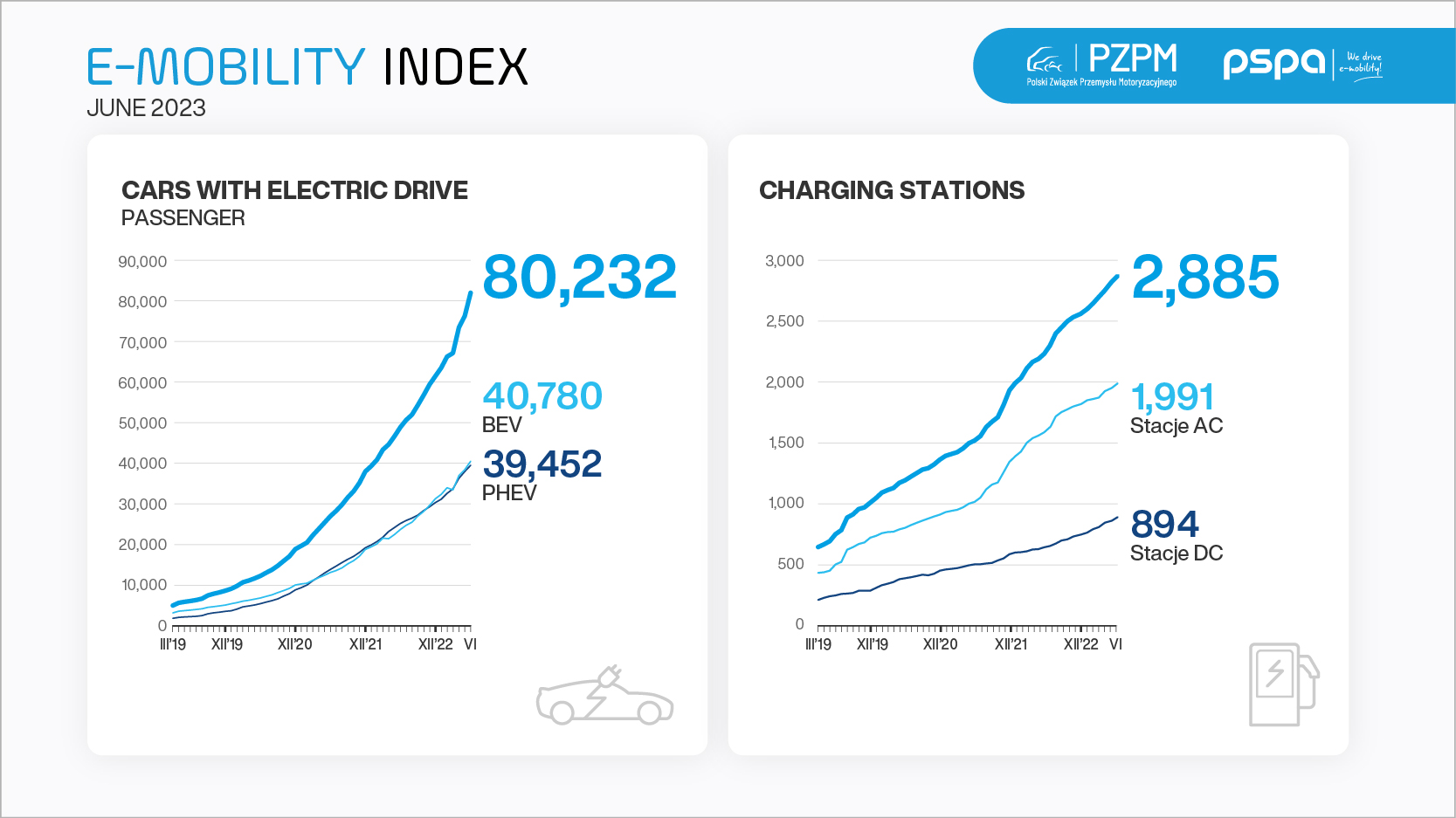According to the data from the end of June 2023, a total of 45,214 all-electric passenger and commercial vehicles (BEVs) were registered in Poland. In the first half of this year, their number increased by 11 489 units, i.e. by 72% more than in the same period of 2022. – according to the
E-mobility Index, launched by PZPM and PSPA.
At the end of June 2023, 80 232 electric passenger cars were driving on Polish roads. The fleet of fully electric cars (BEVs) totalled 40,780 units and the fleet of plug-in hybrid electric vehicles (PHEVs) was 39,452 units. The number of electric vans and trucks came to 4 459 units, of which BEVs accounted for more than 99%. The fleet of electric mopeds and motorbikes is also growing steadily, comprising 17,888 units at the end of June, as well as the number of hybrid cars and vans, which increased to 572,426 units. At the end of last month, Poland’s electric bus fleet increased to 906 units.
In parallel to the fleet of electric vehicles, the charging infrastructure is also developing. At the end of June 2023, there were 2885 publicly available electric vehicle charging stations (5709 points) in Poland. 31% of these were direct current (DC) fast charging stations and 69% were slow alternating current (AC) chargers of 22 kW or less. In June, 49 new public charging stations (112 points) were opened.
– In June, we exceeded 40,000 battery-powered passenger cars in the country-wide fleet. It can be assumed that this part of the car park is growing year-on-year by 80%. Similar dynamics, although a smaller number of vehicles, can be observed in the case of hydrogen cars. It is worth noting that the number of registrations of battery-operated vans continues to grow very dynamically, with increases in excess of 110%. The number of hybrid vehicles is growing steadily at 20% year-on-year. All of this shows that vehicle manufacturers are taking very seriously the decisions of the European and national authorities regarding the transition to zero-emission drivetrains and there are more and more zero and low-emission models on offer – says Jakub Faryś, President of the PZPM.
– In the first half of 2023, the total number of newly commissioned chargers increased only slightly (by 7% y/y), but in the segment of fast stations (DC), the increase was already very clear – it was almost 150% y/y. This is good news, while the worse news is that no stations in Poland are still adapted to serve electric trucks. In the second half of this year, the EU AFIR regulation will come into force. This means that in less than eight years, only along the Polish section of the TEN-T network, the total capacity of eHDV chargers should be almost 580 MW, i.e. about six times more than the total capacity of all public charging stations in Poland at the end of 2022. This is a very serious challenge. The PSPA, in cooperation with leading stakeholders in the e-mobility market, has prepared a number of specific legal solutions, the implementation of which is necessary in terms of meeting the obligations under AFIR. We will present them already in September at the eHDV Forum – a dedicated conference of the zero-emission heavy transport sector, organised as part of the New Mobility Congress 2023 – says Maciej Mazur, Managing Director of PSPA.



